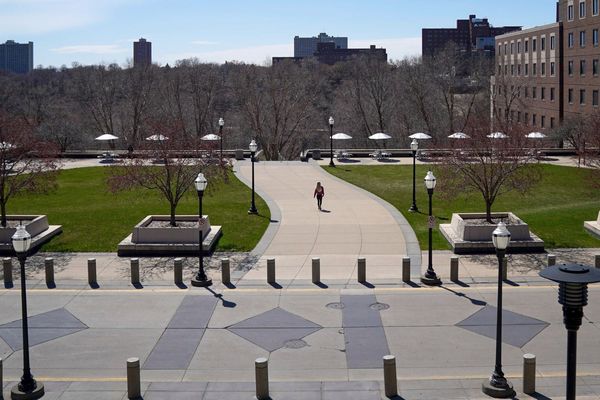
At least 60 people in Melbourne now have legionnaires’ disease, with a further 10 suspected cases being examined, Victoria’s health department has confirmed.
Dr David Lister, the state’s acting chief health officer, on Thursday issued an alert that said the number of confirmed cases in the outbreak had risen by 20 over a 24-hour period.
“Most cases have required hospitalisation, with multiple admissions to intensive care for severe community acquired pneumonia,” the alert said.
It is Victoria’s largest outbreak of the infection since 2000, when more than 150 fell ill and four people died after Melbourne Aquarium cooling towers became infected with legionella pneumophila bacteria.
According to the alert, authorities were still looking for a contaminated water source – most likely a cooling tower – responsible for the outbreak that first emerged on Friday.
All cases – “mostly in adults aged over 40 years” – have visited or reside in metropolitan Melbourne. Earlier in the week, the health department had narrowed the cases down to the north-west suburbs.
The premier, Jacinta Allan, said it would take some time to determine the precise source of the outbreak.
“As people are presenting with the illness, thorough testing is being undertaken and those tests take a number of days to go through processing,” she said earlier on Thursday.
“It is helping to identify a geographic range … around the north-west of the city. Further work is being undertaken to pinpoint precisely that location and advice will be provided [when it is available].”
She said the health department was testing and cleaning cooling towers across the city as part of its response to the outbreak.
Allan urged anyone with symptoms of the illness, including chills, fevers, a cough or feeling unwell, to seek medical attention.
“Particularly for people who may have other underlying conditions or who may be vulnerable or immunocompromised, this can be quite a severe illness,” Allan said.
“There are many people in ICU and many who are currently hospitalised as they’re getting treatment for this illness.”
Sanjaya Senanayake, an associate professor of infectious diseases at the Australian National University, said cases of legionnaires’ disease could be difficult to detect because very few of the people exposed to the bacteria get seriously ill.
“For a lot of people, they may only present with mild systems and they get better by themselves,” he said.
He said there was also evidence cooling towers with legionella could “send aerosols out into the air for more than a kilometre”.
“People can inhale it even though they’re not right next to the cooling tower, and that’s what also makes it a challenge, from a public health outbreak point of view, trying to pin down where people have been to isolate the cooling tower source,” he said.
“Certainly, they’ll be looking at things like that with the patients here. Was there a single exposure? Did they all go to some big event or have they just been walking within the kilometre or two of a cooling tower that’s spitting out Legionella into the air?”
He said it was important for people most at risk – including people with a weakened immune system, smokers and those with chronic lung, heart and kidney issues – to remain vigilant until the source is located.
The health minister, Mary-Anne Thomas, conceded it was “concerning” they were yet to locate the source.
“It’s not an infectious disease. So we need to locate the source and that’s how we resolve the impact,” she said.
The health department said legionella was found in natural bodies of water such as rivers, lakes, creeks and hot springs. It is also found in spas, warm water systems and artificial systems that use water for cooling, heating or industrial processes such as cooling towers, as well as potting mix.
Writing in the Conversation, Flinders University’s Richard Bentham said the large number of cases in a short period indicates a single source.
“A cooling tower attached to a building is most likely responsible. Most explosive outbreaks of legionnaires’ disease are associated with cooling towers,” Bentham said.







